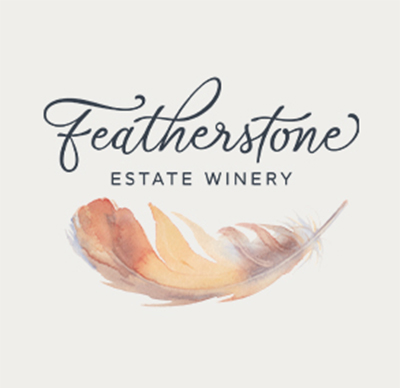The increased exposure to the sun helps the grapes to produce more of the flavour compounds that are important to wine quality. As well, removing grapes leaves in this area allows the morning dew on the grapes to dry more quickly, with the result that harmful moulds are less likely to develop.
Traditionally, the leaves in the fruiting zone are painstakingly removed by hand (or sometimes, using specialized machinery).
Sheep labour in Featherstone’s vineyards
Featherstone Vineyard pioneered something new and unique in the Niagara wine industry by ’employing’ a small flock of sheep to eat their way through the grape leaves that need to be removed from the fruiting zone on the vines.
In 2007, winemaker David Johnson spent eight weeks in New Zealand, where the use of sheep in vineyards is commonplace. Sheep like to eat – and the tender young grape leaves are very appealing to them.
The Featherstone sheep will spend 4-6 weeks in the vineyard and will be moved out once the grapes start to ripen. We source our sheep labour from Penny and Andrew Oliver of Willow Haven Farm in nearby St. Ann’s, Ontario.
“Sheep are ideally suited to the job. They can’t reach very high and aren’t interested in eating the tart, unripe grapes. Using sheep to thin grape leaves is a holistic approach that appeals to us a lot. And of course, there’s the added bonus that they fertilize as they move through the vineyard.” says David Johnson. “The ‘ecological hoofprint’ is quite small.”
The sheep labour is in keeping with other ecologically sensitive practices at Featherstone. The use of sheep is a way Featherstone is distinguishing itself among Ontario wine producers: including natural and integrated approaches to grape growing as part of quality winemaking.



Recent Comments